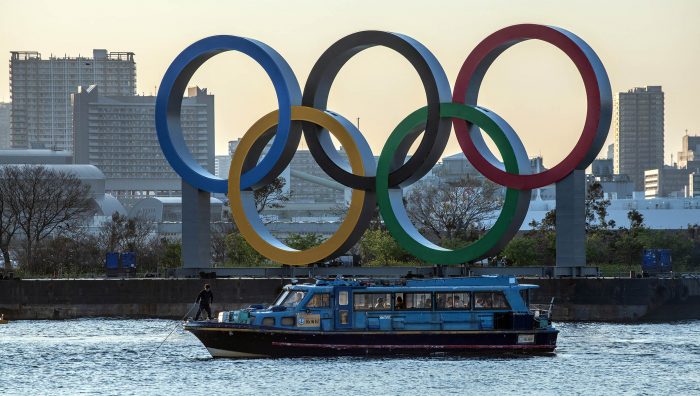With its name splashed all over the stage behind movie star Joan Chen and celebrity chef Art Smith at the Singapore Sun Festival in November, SG Private Banking was proudly presenting itself as well as the artists and the “cinematic soul food” that was the focus of the event.
The private banking arm of French bank Société Générale was footing the bill for the stars to appear and treating 80 of its wealthiest clients to a dinner they were unlikely to forget.

They washed down southern cuisine from Smith, who has served as chef to Oprah Winfrey and the Obamas, with Napa Valley wine, while Chen, star of The Last Emperor, explained her walk through the showbiz world from her first film at the age of 14.
In the eyes of marketing professionals and event organisers, such sponsored events are an excellent way for a company to win hearts and minds.
There are a few pitfalls to avoid, for sure. But if handled correctly, sponsorships bring excellent name recognition, plenty of press coverage, and an opportunity for companies to charm and talk to their best customers.
“Event sponsorship for corporates can be quite an inexpensive way to get a lot of mileage,” Mindy Coppin, a senior vice-president and director of IMG Artists (Asia Pacific), says.
In Singapore, where a full-page advertisement in a newspaper might cost S$50,000 (US$36,152) to S$70,000 (US$50,613), a corporation might get a sponsorship of a one-off event for S$100,000 (US$72,305). To put your name on a major multi-event festival might cost as much as S$750,000 (US$542,288).

For that, companies will get their name on the event, get broad media exposure as a result, get tickets that they can use to entertain favourite clients, perhaps even get special behind-the-scenes access to a performer. But as events become more expensive to sponsor, there’s also more at risk for the companies involved. They certainly expect something back beyond the perks.
It’s a good rule of thumb that a sponsor should be looking for a return of three times its money on any event that it sponsors, according to Bruce Kaider, who is both the president of the trade group Sponsorship Australasia and the general manager of business development and strategy for the Melbourne-based Australian rules football team the Western Bulldogs.
“If you invest A$50 million (approximately US$43.67 million) you would want to get A$150 million back, whether it’s brand exposure, sales; there’s lots of different ways you can get that,” says Kaider, who also acts as an agent for several prominent Australian athletes. “There’s definitely more science to it because the dollars are bigger, the risk is higher and there’s a lot more accountability with sponsorship nowadays.”
It can be costly when things go wrong. IMG, the agency representing Tiger Woods, lost US$4.6 million in fees from the fallout over revelations of Woods’ sexual escapades, according to CNBC. If Woods gets charged the standard 15 to 20 percent management fees companies take from their clients, that would suggest he lost US$23 million to US$30 million in endorsements.
It’s hard to calculate the negative press for his sponsors. To Kaider, sponsorships of events, teams and athletes all offer challenges. Good sponsors and event organisers will prepare for the worst and hope for the best.
“I say in business there’s always risk,” Kaider says. “You’ve got to take calculated risks from time to time. More often than not, you’ll find the risks you took don’t happen in reality. But you’ve got to have plan in place to respond to them in a timely manner.”
Besides representing Woods, IMG wears a number of hats. The IMG Artists arm that Coppin works for not only represents performing artists but also produces events itself and consults with people who are organising their own events. That sometimes involves advising financial firms on their cultural sponsorship portfolios – besides SocGen, the company has also worked with Credit Suisse, UBS, Citibank, Morgan Stanley and Standard Chartered.
IMG Artists has put together one-off events, such as jazz singer and pianist Diana Krall’s 2008 tour of China sponsored by Rolex, and also runs recurring events such as LIVE!, a conference and trade event for the performing arts that took place in Singapore in June. The industry-focused event was put on by three sponsors, Mercedes-Benz, Lufthansa and IndoChine.
IMG also works on the annual Singapore Sun Festival, a huge, multi-event set of concerts and performances that span music, wine, cuisine, health, literature, film and the visual arts. The Sun Festival, which takes place this year from October 29 to November 7, has a wide range of sponsors at various levels, some devoted to one specific event and others ranging across the whole festival.
Besides a good bang for the marketing buck in terms of exposure, events allow sponsors to demonstrate that they’re both tapped into and supporting their local community. That’s particularly true with events like the Sun Festival, which has government backing, meaning the sponsor wins “brownie points” for fulfilling its civic duty. Such events also give them valuable ways to interact with their customers.
“It’s experiential – they are entertaining their clients,” Coppin notes. “There’s an emotional factor tied to their clients attending an event rather than just reading an ad.”
Sometimes, a company constructs the event itself. Credit Suisse, for instance, didn’t want to sponsor an individual event and chose instead to select one artist to tour the region. It selected the Welsh bass-baritone opera singer Bryn Terfel and put up the money for him to tour five cities in Asia, a tour that otherwise wouldn’t have happened.
“They chose the artist they wanted, they chose the cities they wanted, they chose the event,” Coppin explains. Classical music helps them project a certain image and works well with their branding of their private bank as high-end and sophisticated product.
When considering putting on an event, it’s incumbent on both the event organiser and any potential sponsors to do their homework. Both sides need to make sure there’s real value behind the sponsorship, or it can lead to disaster. It’s no good courting a bank for a punk rock concert, or trying to shoehorn makers of mass-market consumer goods into sponsoring a high-end yacht race.
“The really important thing is, if an event is looking for a sponsor or the sponsor is looking for an event, that they make sure it is the right fit,” Coppin says. “If that is misaligned, everybody is going to be unhappy.”
It’s also important to make sure there aren’t any competitive issues if there are multiple sponsors for one event. Rival brands should not be allowed to sponsor the same event, organisers say, and certainly not at the same level of sponsorship. If there are multiple shows within a larger festival, competitors may sponsor different events, but they should be made aware of the fact.
Another potential cause for complications is the cancellation of an appearance by a star performer. If a company has sponsored a golf event because they are expecting Vijay Singh to appear, for instance, and he cancels at the last minute, it needs to be spelled out what happens next.
Sponsorship “is a business transaction, and a marketing collaboration, so there are risks”, Coppin says. “Because it is marketing and advertising based, it can be quite public. So having reputable partners and making sure your agreement is really tight is vital.”
The best solution may be to find a suitable replacement. If that’s not possible, the organiser may look at deferring or rescheduling the event. The worst-case scenario is cancellation, in which case the organiser would refund the sponsorship amount to the sponsor, minus the value of any benefits they have already received in the way of marketing or advertising for the event.
If the sponsor and the event mesh, the payback is a mutually beneficial relationship that can last for years. In fact, event organisers say, it’s after multiple years of sponsorship that the effects are most obvious, with good name recognition of the sponsor tied into the event in the mind of those who attend.
Kaider cites research showing that a consumer has to see a message eight times before they’ll actually change their purchase decision or in some cases make the decision to purchase. As a result, he believes the sponsorship market is shifting away from one-off events to longer-term deals.
“There’s a lot of value in sponsoring sports teams or leagues, where they play for six or eight months of the year, and it’s really an eight-or nine-month campaign,” Kaider says. “Repetition, that’s what you’re looking for if you’re a brand.”
But he says the same rule is true for companies that sponsor trade shows or business events. It’s better to commit the money for multiple shows that will give you repeated exposure rather than have a blitz at one big event.
“If they run four a year and you sponsor them for the next three years, you’re going to get your consistence and have control over the outcome,” Kaider says.
It’s not only big, consumer-focused events that offer rewards to sponsors. Business to business, or B2B, events can also provide a “high-touch” environment where a sponsor gets access to a very specific, tailored audience.
Event organisers say they are working on next year’s show before the current one is even over, seeking ways to improve the sponsor-event relationship and looking for ways of adding value in the following year. Professional organisers will also provide a full and detailed report on an event after it has happened for a sponsor to review, so they can assess what kind of value they got for their money.
Nancy Tan, who runs B2B events as the managing director of the Singapore branch of the company Ace Daytons Direct, says novice event organisers may think it’s going to be easy to convince a sponsor to come on board if their product and the event are a good match. But it’s not that simple and is much more time consuming than you’d imagine.
“You need to nurture people,” Tan says. “Most sponsors come in after three or four meetings. So it takes maybe a year to get one sponsor.”
“If there are no sponsors, there will be no event,” Tan says. “Registration fees don’t cover the total budget, so it would be too expensive – the cost of operations is quite high.”
One of Tan’s specialities is to put on events for the medical profession. Such events allow companies that make drugs or medical equipment to talk directly to their consumers, the doctors, in a much more direct way than if they advertise in medical journals.
“If you just do public relations or advertising, you only thump chest,” Tan says. “You may publish in a journal. But that doesn’t mean people have read it. With sponsorship you open up a dialogue, and they can communicate directly with the consumer. They will be your ambassador.”
Sarkar agrees that sponsored events are a more effective means for a company to get its message out, often in a way that’s a softer sell than traditional advertising.
“The surfeit of advertising in print and media does not allow the sponsor’s visibility to have a lasting impact,” she says. “The message gets diluted and sometimes even gets lost. In fact, it could happen that being so much in-the-face actually turns the consumer off. On the other hand, the indirect and subtle brand visibility created at trade fairs is probably more useful and positive.”
Some sponsors favour a hard sell and get overly ambitious or aggressive. To avoid problems, it’s vital to spell out the rules of engagement, event organisers say, and it must be very clear in the contract what rights sponsors get for their money.
In the case of B2B events, they typically thrive off the exclusivity and the relevance of the programme schedule. So that must be decided in an impartial way, considering only what will appeal to the audience. For instance, at medical events, a scientific committee normally draws up the programme. That should happen without interference from the sponsor.
“We do not allow sponsors to dictate the content of the event, or speakers – the content is still very high-end,” Tan says. Even sponsored-lunch events, where a company may be able to select a speaker, must be cleared by the scientists. You live and die by the quality of the event. “But if you have good content, you get good speakers, and then the sponsors will be very happy.”
EXPERT VIEW
KW Conferences organises events in India, with roughly 60 percent of its business coming from running meetings for professional associations and the other 40 percent coming from B2B events in industries such as steel production and solar power.
Monimita Sarkar, the managing director of KW Conferences, says about 75 percent of the events have a sponsor. She believes they get good value for money because the shows are niche events and the perfect way to launch or fine tune products.
“You get a very focused audience,” she explains. “As a sponsor, you’ll be a speaker, you get special networking time, often we might have a private breakfast for just the speakers or for very high level delegations with the sponsor.”
KW Conferences is organising the second year of a show devoted to the solar-power and photovoltaic-cells industry. With a highly regulated industry like power generation, the most important contacts that companies can make are with public officials, as is often the case in India. So the conference organiser can ensure the success of the event by making sure government officials take part.
“When we have very senior government officials attending, then the producers and sellers get face-to-face interaction with the government,” Sarkar notes. “So we really bring them face to face with their largest consumer and that’s where they get return on investment.”
It is tougher to sell the idea of sponsoring an event than simply to sell floor space at an exhibition, KW Conferences finds. Exhibition space is a tangible product and yields measurable face-to-face contact, whereas selling event sponsorships is still more theoretical.
“A sponsorship is tougher to sell because you are selling a concept, you are selling an intangible,” Sarkar says. “It’s very hard work.”
One of the makings of successful event management is to quantify results as much as possible. The running and management of the event does not stop when the show itself ends, event organisers say. They recommend a substantial amount of post-programme follow-up.
“What we try and do is track the show year on year, and see who comes back and why do they come back, and what business has been generated frankly from these meetings,” Sarkar says.
DOS
Mindy Coppin with the Singapore office of IMG Artists offers these golden rules for anyone planning a sponsored event.
l Know your sponsor. Ensure your market positioning is complementary to the sponsor company’s, and the event is the “right fit”.
l Know your event. Be armed with the statistics and track record of the event, so that your sponsor knows you know your product. Know the target market and how the sponsor can use your event to tap it.
l Enter into a formal legal agreement with your sponsor. Make sure it spells out the deal in detail and has clear cancellation and liability clauses.
l Have a great marketing and public-relations plan. Make sure it will benefit both your sponsor and your event.
l Communicate regularly with your sponsor. Keep them well informed, like any business partner. This includes submitting detailed reports to your sponsor at the conclusion of the event.
DON’TS
l Take the money and run.
l Make promises to your sponsor that you don’t intend to or simply cannot keep.
l Sell a sponsor something that you don’t have the rights to in the first place.
l Have two competing sponsors on the same event. You need to offer category exclusivity, or you will burn more bridges than you can afford to.
l Refuse to reveal details of your programme or plans to your sponsor. You need to be open and communicative. Treat your sponsorship relationship as a collaborative partnership, to ensure a long-term, successful sponsor relationship.Take the money and run.
TOP TIPS
Spend time on matching your brand with the right event
Aim for a return on investment of 3:1
Look for a long-term, repeat event not a one-off
Consider constructing your own event, rather than just jumping on the bandwagon with others
Use sponsorship to match your corporate social responsibility programme
Subtle branding sometimes works better than a hard-sell approach that might alienate attendees
Look at the quality of the people attending the event not the quantity, small niche events might deliver to your target audience better than a large one
Get it in writing. Make sure you spend time going through the fine print of any contract before committing to the deal.


